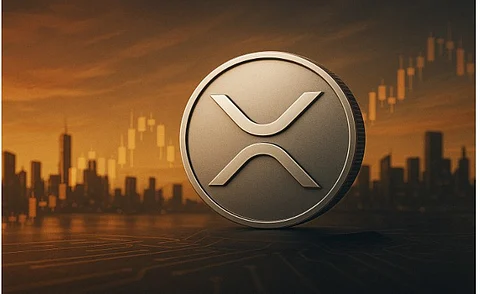

XRP has lost momentum after a sharp drop to $2.08, with traders experiencing weak support and fading demand. As legal uncertainty and falling activity weigh on XRP’s future, a new payment star, Remittix, is gaining serious traction.
With real-world payment use and growing investor interest, it’s becoming the token to watch. Wondering why XRP is slipping? Keep reading; you’re about to see why the smart money may be moving in a new direction.
XRP has dropped for five straight days. On May 6, it hit a low of $2.08, marking its worst price in two weeks. The charts don’t look good. A descending triangle pattern has formed, which some traders believe could push XRP down to $1.20 if support breaks.
Paul Howard from Wincent says XRP no longer moves with Bitcoin. Instead, it now reacts to legal news and media updates about Ripple. The big problem is that XRP isn’t attracting users like before.
Data from XRPScan shows that the number of people using the network has dropped to 30,000 daily addresses. This makes the coin harder to trade and hurts its price.
Another issue is regulation. Even though Ripple settled with the SEC for $50 million, there’s little excitement. The next thing people want is an XRP spot ETF. But that’s delayed. The SEC hasn’t approved any yet.
Lastly, macro problems are adding pressure. US inflation data, Fed meetings, and Trump’s new trade tariffs have all made crypto traders uneasy. XRP fell harder than most coins after an early April $1.3 trillion crash. So even though there’s hope in the long run, things look rough right now.
While XRP is struggling, a newer coin called Remittix (RTX) is gaining steam. It’s made for one simple thing: sending money fast and cheap across countries. You can use it to send crypto like Bitcoin or XRP and get cash directly into a regular bank account. That’s a big deal for people working overseas or businesses with clients in different countries.
The idea is simple. Most crypto users still have to pay rent, buy food, or cover bills in local currency. Remittix makes that switch from digital coin to local money easier. According to CoinGlass, RTX has grown 400% since its presale started. It now trades at $0.0757.
The PayFi feature is at the heart of this growth. It connects global payment networks with different blockchains. So, someone in Nigeria could send crypto to someone in Mexico and have it arrive in pesos in a local bank account, fast and with low fees. Analysts say this could change how people move money around the world.
XRP has been around for years. It’s popular, but it’s experiencing slow growth now. Many believe Ripple’s focus is shifting away from XRP. They’ve started pushing a new stablecoin called RLUSD, which is creating confusion. If Ripple uses RLUSD more, what happens to XRP? That doubt is driving investors to look elsewhere.
Remittix is different. It isn’t trying to be a global brand. It’s trying to fix one clear problem: high-cost remittances. Its product is simple, and the goal is clear. And its early success has drawn the attention of whales and analysts alike. The XRP price may double at best, but RTX could grow 100x according to experts.
XRP is stuck in legal debates, has weak charts, and has low user activity. Remittix focuses on fixing a real-world problem with a tool people need. As crypto gets more adoption, traders are moving from hype to purpose. For now, Remittix looks like the smarter bet.
Website: https://remittix.io/
Socials: https://linktr.ee/remittix
Join our WhatsApp Channel to get the latest news, exclusives and videos on WhatsApp
_____________
Disclaimer: Analytics Insight does not provide financial advice or guidance on cryptocurrencies and stocks. Also note that the cryptocurrencies mentioned/listed on the website could potentially be scams, i.e. designed to induce you to invest financial resources that may be lost forever and not be recoverable once investments are made. This article is provided for informational purposes and does not constitute investment advice. You are responsible for conducting your own research (DYOR) before making any investments. Read more about the financial risks involved here.
